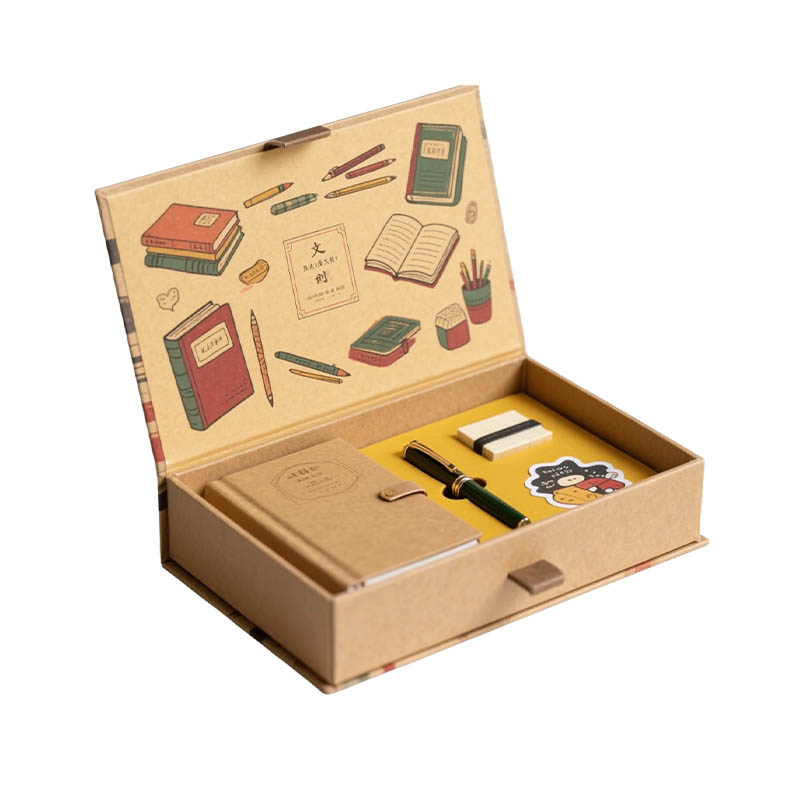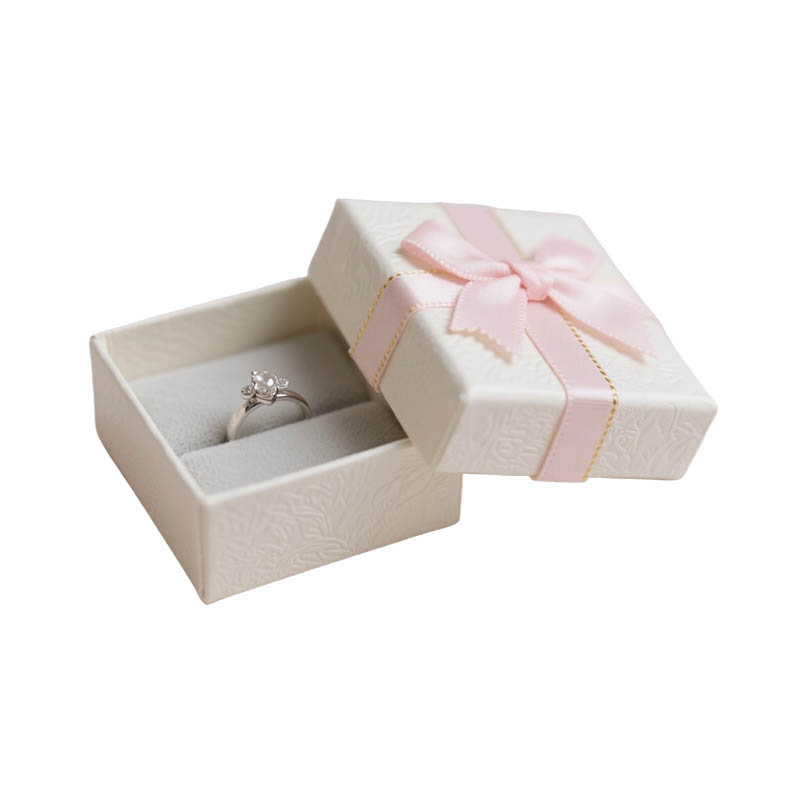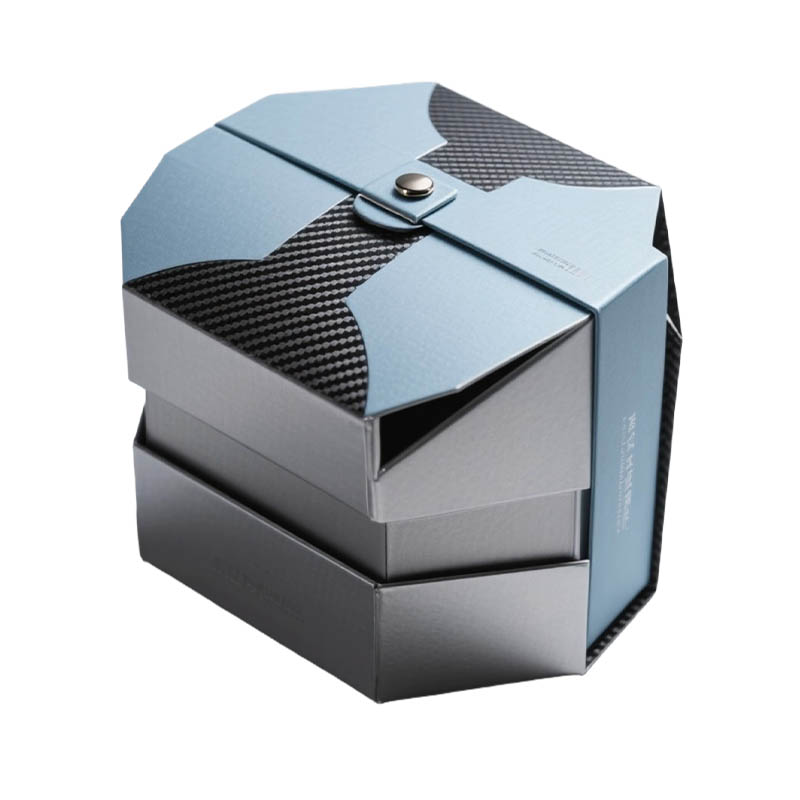Can the telescopic box become a dynamic choice for high-end packaging design?
Release Time : 2025-11-13
In today's world, where consumption upgrades and brand experience are increasingly important, packaging is no longer just a container for products, but also a crucial medium for conveying brand value, enhancing the unboxing experience, and strengthening user memory. The telescopic box—a packaging structure consisting of an outer and inner box that opens and closes via a pull-out mechanism—is becoming a popular choice for cosmetics, jewelry, electronics, high-end gifts, and limited-edition products due to its unique interactivity, space utilization, and visual hierarchy. Although made of paper, its ingenious structural design embodies both elegance and practicality within a small space.
The core advantage of the telescopic box lies first and foremost in its superior user experience and ability to create a sense of ritual. The process of gently pulling the inner box and slowly sliding out the contents is like unveiling a mystery, giving the unboxing experience rhythm and anticipation. This linear, smooth opening method avoids the abruptness of flip-top boxes or the bulkiness of top-and-bottom boxes, making it particularly suitable for displaying delicate and compact products. When closed, the inner box is completely embedded in the outer box, resulting in a clean and flat overall appearance that facilitates display and transportation. When opened, the inner and outer boxes create a visually appealing, layered effect, cleverly separating the main product from accessories and enhancing the perceived value of the product.
In terms of structural functionality, the telescopic box demonstrates high space efficiency and protective performance. The inner and outer boxes fit tightly together, effectively preventing shaking and collisions during transportation. The inner lining slots can be precisely customized to fit the product dimensions, achieving a secure "one item, one place" solution. For fragile or high-value items, such as glass-bottled perfumes, precision electronic components, or precious metal jewelry, this close-fitting packaging significantly reduces the risk of breakage. Furthermore, the telescopic structure requires no additional locks or tape, relying on the friction and tolerance design of the cardboard itself to achieve a stable closure, balancing safety and environmental friendliness.
The materials and printing performance are equally outstanding. Telescopic boxes are typically made of high-grammage white cardboard, specialty art paper, or environmentally friendly recycled paper, and the surface can be treated with various processes such as hot stamping, UV coating, embossing, and screen printing. The outer box, as the primary visual carrier of the brand, can display large-area high-definition graphics and brand logos; the inner box often uses elegant colors or tactile coatings to create visual contrast and textural harmony. Transparent window versions can be combined with PET sheets to showcase the product directly without opening, balancing mystery and information delivery.
Sustainability and cost-effectiveness are also crucial. Telescopic boxes are mostly made entirely of paper, without plastic inserts or composite films, meeting FSC certification and recyclability standards; die-cutting and gluing processes are mature, suitable for medium to large-volume production, with controllable unit costs. Their compact shape reduces storage and logistics volume, lowering the carbon footprint. In the trend of e-commerce packaging, the flat, closed state of telescopic boxes also facilitates automated packaging and stacking, improving supply chain efficiency.
At a deeper level, telescopic boxes embody the evolution of packaging design from "functional containers" to "emotional touchpoints." They are not just boxes for holding items, but also a silent dialogue between the brand and the consumer. Every pull is a confirmation of quality; every detail is an expression of aesthetics. Luxury brands use it to enhance their sense of prestige, emerging brands to create memorable impressions, and cultural and creative products to tell stories—the telescopic structure itself has become a design language.
Furthermore, this packaging format boasts excellent versatility. It can be adapted into double-pull designs (pullable from both sides), tiered designs (multi-layered inner boxes unfold progressively), or magnetically assisted designs to meet the needs of complex product combinations. Combined with RFID tags or QR codes, it can seamlessly integrate into digital marketing systems, enabling anti-counterfeiting traceability and interactive experiences.
In conclusion, the telescopic box transcends the scope of traditional packaging, becoming an intelligent carrier integrating industrial design, user experience, and brand strategy. It uses paper as its framework to construct an intricate structure; it uses movement as a medium to trigger emotional resonance; and its simple form carries rich connotations. When consumers lightly touch the lid and slowly pull it open, the surprise and joy they experience is precisely the unique value created by the telescopic box as "breathable packaging"—this seemingly simple cardboard box is actually the first chapter in a modern brand's storytelling.
The core advantage of the telescopic box lies first and foremost in its superior user experience and ability to create a sense of ritual. The process of gently pulling the inner box and slowly sliding out the contents is like unveiling a mystery, giving the unboxing experience rhythm and anticipation. This linear, smooth opening method avoids the abruptness of flip-top boxes or the bulkiness of top-and-bottom boxes, making it particularly suitable for displaying delicate and compact products. When closed, the inner box is completely embedded in the outer box, resulting in a clean and flat overall appearance that facilitates display and transportation. When opened, the inner and outer boxes create a visually appealing, layered effect, cleverly separating the main product from accessories and enhancing the perceived value of the product.
In terms of structural functionality, the telescopic box demonstrates high space efficiency and protective performance. The inner and outer boxes fit tightly together, effectively preventing shaking and collisions during transportation. The inner lining slots can be precisely customized to fit the product dimensions, achieving a secure "one item, one place" solution. For fragile or high-value items, such as glass-bottled perfumes, precision electronic components, or precious metal jewelry, this close-fitting packaging significantly reduces the risk of breakage. Furthermore, the telescopic structure requires no additional locks or tape, relying on the friction and tolerance design of the cardboard itself to achieve a stable closure, balancing safety and environmental friendliness.
The materials and printing performance are equally outstanding. Telescopic boxes are typically made of high-grammage white cardboard, specialty art paper, or environmentally friendly recycled paper, and the surface can be treated with various processes such as hot stamping, UV coating, embossing, and screen printing. The outer box, as the primary visual carrier of the brand, can display large-area high-definition graphics and brand logos; the inner box often uses elegant colors or tactile coatings to create visual contrast and textural harmony. Transparent window versions can be combined with PET sheets to showcase the product directly without opening, balancing mystery and information delivery.
Sustainability and cost-effectiveness are also crucial. Telescopic boxes are mostly made entirely of paper, without plastic inserts or composite films, meeting FSC certification and recyclability standards; die-cutting and gluing processes are mature, suitable for medium to large-volume production, with controllable unit costs. Their compact shape reduces storage and logistics volume, lowering the carbon footprint. In the trend of e-commerce packaging, the flat, closed state of telescopic boxes also facilitates automated packaging and stacking, improving supply chain efficiency.
At a deeper level, telescopic boxes embody the evolution of packaging design from "functional containers" to "emotional touchpoints." They are not just boxes for holding items, but also a silent dialogue between the brand and the consumer. Every pull is a confirmation of quality; every detail is an expression of aesthetics. Luxury brands use it to enhance their sense of prestige, emerging brands to create memorable impressions, and cultural and creative products to tell stories—the telescopic structure itself has become a design language.
Furthermore, this packaging format boasts excellent versatility. It can be adapted into double-pull designs (pullable from both sides), tiered designs (multi-layered inner boxes unfold progressively), or magnetically assisted designs to meet the needs of complex product combinations. Combined with RFID tags or QR codes, it can seamlessly integrate into digital marketing systems, enabling anti-counterfeiting traceability and interactive experiences.
In conclusion, the telescopic box transcends the scope of traditional packaging, becoming an intelligent carrier integrating industrial design, user experience, and brand strategy. It uses paper as its framework to construct an intricate structure; it uses movement as a medium to trigger emotional resonance; and its simple form carries rich connotations. When consumers lightly touch the lid and slowly pull it open, the surprise and joy they experience is precisely the unique value created by the telescopic box as "breathable packaging"—this seemingly simple cardboard box is actually the first chapter in a modern brand's storytelling.







